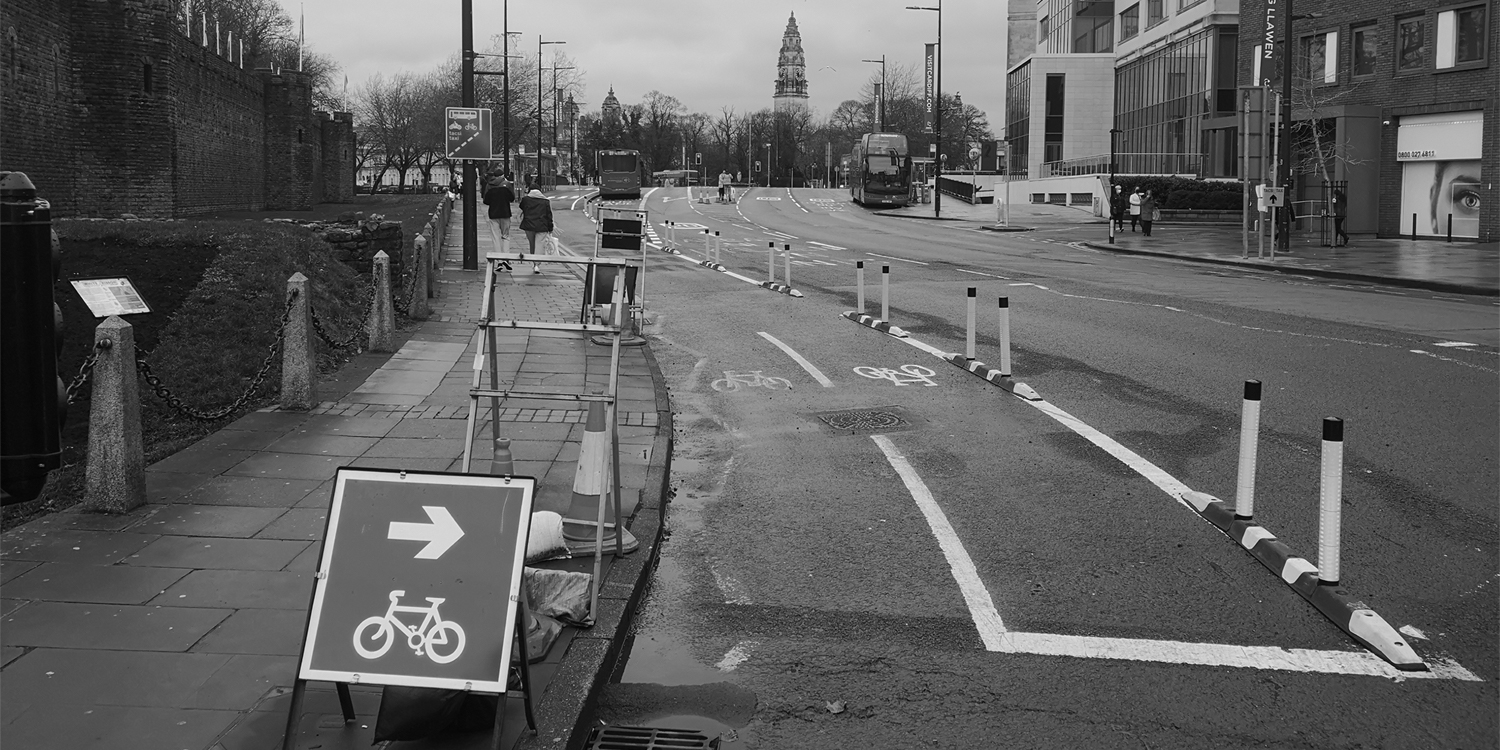Community groups are leading a push to make cycling more accessible across Cardiff.

Cardiff has struggled to be a true city for cyclists for many years, with motorists being the focus of transport infrastructure. But now, new community initiatives are leading the way in attempts to make Cardiff a model cycling city for the rest of the UK to follow.
In reality, active travel should be the focus not an alternative for the future, but as public opinion only gradually begins to sway, infrastructure needs to set a strong foundation to build upon.
The wheels may have only slowly begun to turn, but changes in public and council attitudes shows real positive change could be on its way.
(Right – Active travel infrastructure solution in Auckland, NZ. Image: Dan Freeman)
Why is this an issue?
Most cyclists that travel frequently around Cardiff will know that there’s an abundance of dangers and barriers that often prevent cycling becoming a viable option for many.
For many that just want to give active travel a go, it means defaulting to a use of a car for many trips where it shouldn’t be necessary.
Peter Bell is a coordinator for Living Streets Roath, a volunteer group that is attempting to make streets more people-friendly and promote active travel. He says: “The important thing is giving people a choice; people would use the alternatives if they were there.
“Many of us would love to get around the area on a bike but at the moment don’t feel it’s safe.”
Krysia Solheim, who is the managing director at NextBike UK agrees with the sentiment, and adds: “It can be daunting for even experienced riders to cycle alongside city centre traffic, so it is a significant barrier to entry for new cyclists.”
A new report posted by Cycling UK backs up this belief. Their survey says that 66% of people in a national survey supported reallocating road space for walking and cycling, while a YouGov survey from June says that 77% of people were in favour of measures in their local area to support cycling and walking.
“Many of us would love to get around the area on a bike but at the moment don’t feel it’s safe.”
Peter Bell, Living Streets Roath Coordinator
It is important to say that focusing on these initiatives is not an attack on motorists.
Sometimes these arguments create a division where only one side can “win”, but that’s always counter-productive. It’s vital that people using all types of transport work together to make sure Cardiff has a bright future.
Solheim says: “We need to normalise cycling for the masses – that means pedestrians, cyclists and drivers. The more bikes we see on the road, the safer cycling becomes as other road users become accustomed to sharing their space with them.”
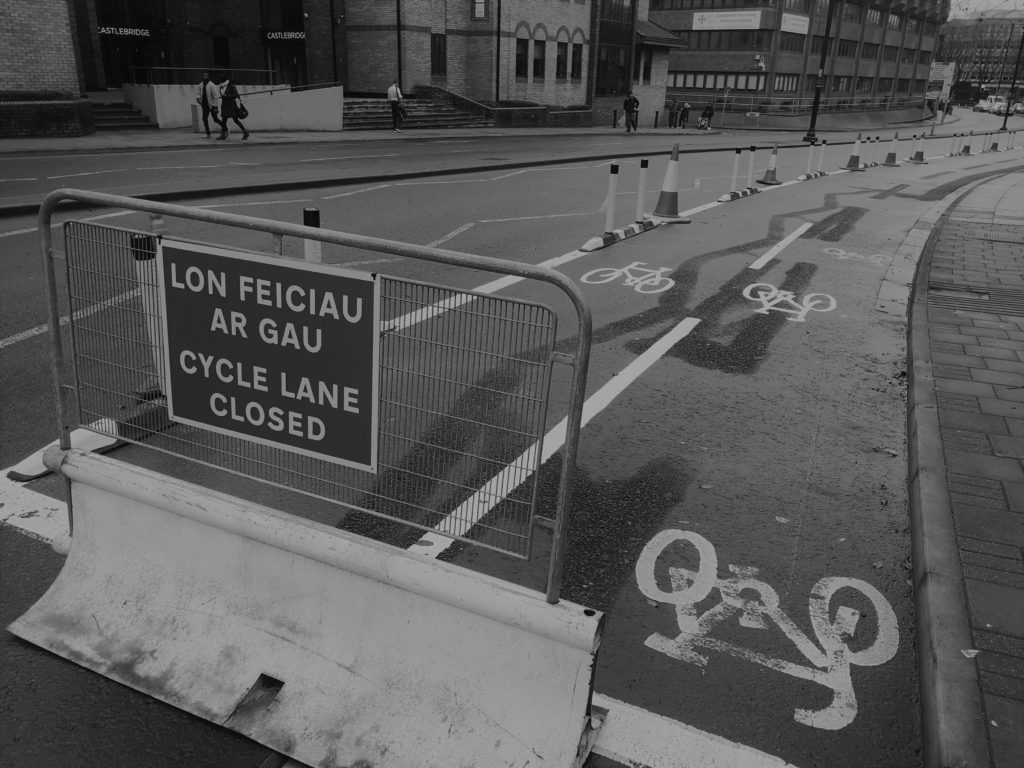
So, why is it important?
Caro Wild, Cardiff Council cabinet member for strategic planning and transport, outlined why he feels providing active travel opportunities is so important in a Q&A with members of “Cardiff Cycle City” last week.
Wild argued that active travel infrastructure was a “silver bullet” to many of the biggest issues that are not just facing our city, but the wider world.
These are huge, complicated issues but providing active travel opportunities allows an easy and direct solution to create positive change.
1. Climate Change
Climate change is one of the largest problems facing the future of our planet but sometimes it can seem tricky to find out what we can do to make an impact.
Caro Wild says one of the biggest things we can do to combat climate change in Cardiff is to “improve transport infrastructure and get people out of their cars”.
I’m not going to tackle Climate Change in depth because there are much better people to speak on it, but I hope it is evident how active travel positively contributes to the biggest issue affecting our future.
2. Air Pollution
This is an issue that has become much more obvious to residents of Cardiff in recent years. The British government describes poor air quality as the “largest environmental risk to public health in the UK, contributing to chronic conditions such as cardiovascular and respiratory diseases that can lower life expectancy.”
This month, the first person was identified as having air pollution contribute to their cause of death in the UK.
“The largest environmental risk to public health in the UK”
Public Health England
Caro Wild reminds us that air pollution is a “public health crisis” and that Cardiff in particular has a “poor level of air quality.”
An interesting note to come out of the COVID-19 lockdowns was the effect it had on reducing air pollution.
Below is a graph that compares Cardiff’s air quality between March and June for this year and the last. These were the months in 2020 when Wales was put into its first national lockdown. While the graph measures complicated things, the important thing to take away is that higher numbers and lighter colours represent poorer overall air quality. The difference is noticeable, just look at the worst days of 2020 compared to 2019.


It is incredible to see such an obvious depiction of how much of a difference fewer cars on the road is to improving air quality around Cardiff and shows that change is not just possible but easier than you might think.
3. Equality
While it may not be obvious at first, providing active travel opportunities also has a massive impact on improving equality.
Caro Wild says “The poorest people are the least likely to own cars and therefore sending more of the Cardiff Council budget towards active travel infrastructure tends to benefit those in our society that need it most.
Walking and cycling are the areas that target the entirety of society for the many that can’t afford the high costs that are involved in the purchase and upkeep of owning a car.”
Caro Wild also states the importance for improving the gender imbalance:
“Improvements to cycling infrastructure typically favour women, who are traditionally left out of infrastructure spend that revolves around the ‘9 to 5’ commuter that are considerably more likely to be men.”
“Active travel spending favours women, who are typically left out of infrastructure spending”
Caro Wild, Cardiff Cabinet Member for Strategic Planning & Transport
This list carries on: Improving health (both physical and mental), promoting local communities, making Cardiff a more desirable place to live, preventing unnecessary deaths.
Caro Wild tells adds: “The largest cause of death for a primary age child is being hit by a car.
“Through better infrastructure, those deaths are often preventable.”
What can be done?
The most important thing to realise is that there are already cities across Europe that provide clear roadmaps showing how we can be successful with active travel, one of the most famous being Paris.
Anne Hidalgo, who has been the mayor of Paris since 2014, has taken what many saw as a radical approach by prioritising construction of protected cycle lane infrastructure across the city.
Progress was evident almost immediately. Paris had more people cycling, lower pollution and the first decrease in car usage since the 1940s.
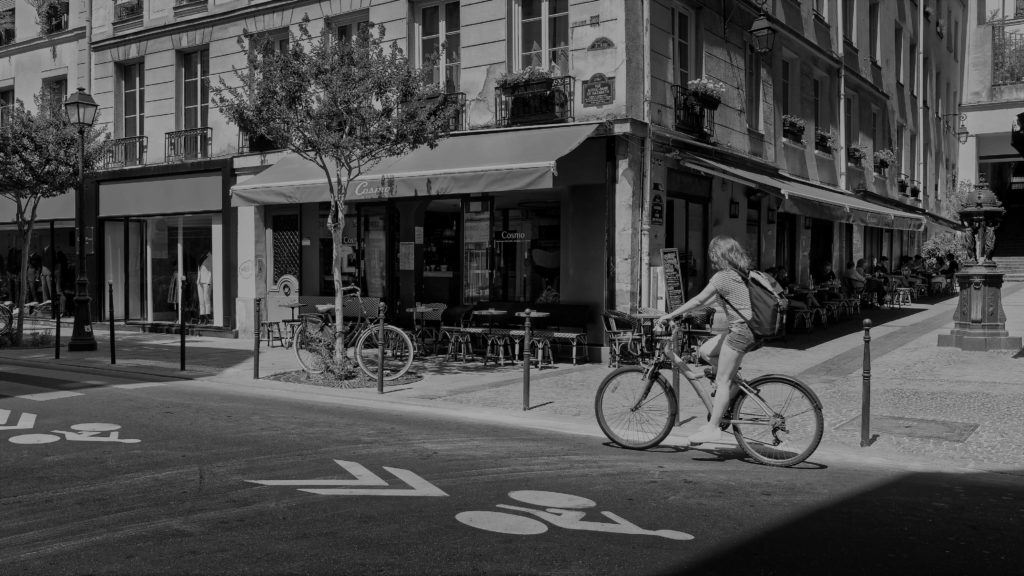
Peter Bell, who used to live in Paris, said: “People said it wouldn’t work because they didn’t like cycling in Paris before but as soon as the infrastructure was available people got behind it. The government must be willing to take bold decisions.”
The positive news is that Cardiff is slowly making progress on the same front.
Recently, Cardiff Council rolled out a new transport strategy for Cardiff East, claiming that it would “emphasise active travel as a priority to support healthy and sustainable lifestyles and allow low-cost travel.” It represents a wider shift in council strategy on transport infrastructure.
Mr Bell said: “There are now more people inside local government that are keen to use active travel and therefore there is increased awareness that this sort of thing matters and we have saturation point as far as motor vehicles go, we need to start providing alternatives.”
One of the big success stories in recent years has been the Cardiff NextBike rental scheme.
Since its introduction in 2018, bicycles provided by NextBike have be rented 900,000 times across Cardiff, making it their most popular scheme in the UK.

Krysia Solheim from NextBike encourages people to get behind active travel infrastructure.
“We have to create safe spaces for people to cycle in and we have to create cycle networks that are useful and connected so that people can rely on them wherever they need to go safely and efficiently.”
But it’s not just the big picture things that are being done to promote active travel. One of the biggest reasons is cooperation between the Council and both local community groups and businesses.
“We have to create safe spaces for people to cycle in and we have to create cycle networks that are useful and connected so that people can rely on them wherever they need to go safely and efficiently.”
Krysia Solheim, NextBike Managing Director
In November, Cardiff Council unveiled the “Commonplace” scheme that aims to work with communities to make change at a hyper-local level.
Caro Wild describes it as the “thousand little things we have to focus on”. It works as a map of Cardiff, giving the public power to place pins that identify issues in infrastructure across the city. Anyone can go to the website and identify an issue that the council should look into.
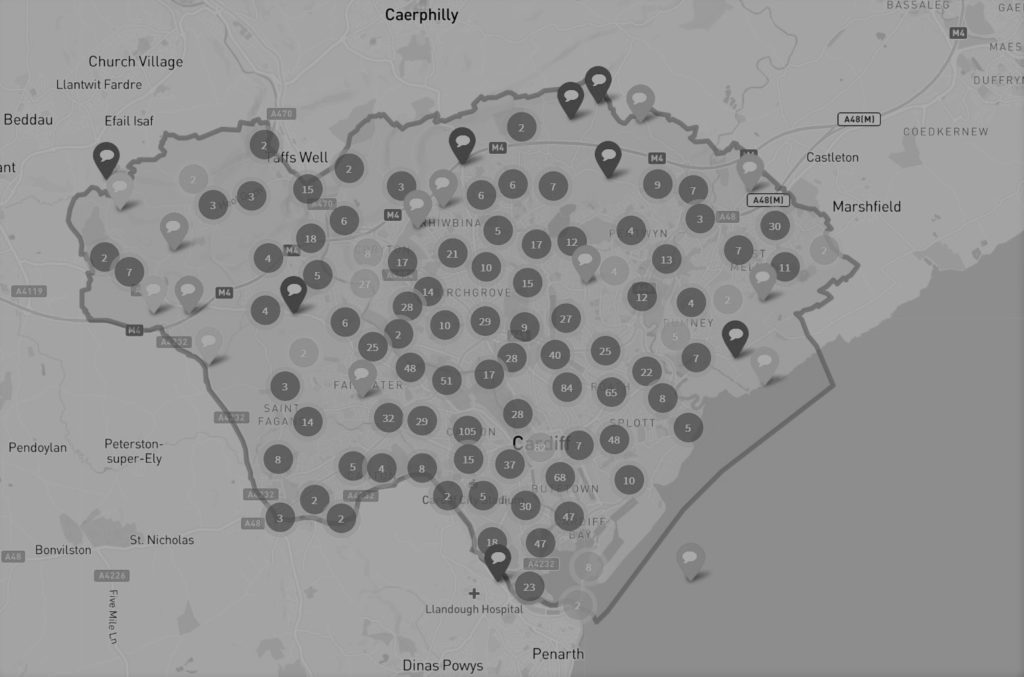
Another idea is the Cardiff group of the WeCount project, who say they want to “investigate the link between road transport and air pollution” and “understand the barriers to sustainable behaviours.”
WeCount sends out free traffic sensors to Cardiff residents that track the number of cars moving up and down your street each day. The results can be compiled into a massive, in-depth set of data that allows us to better understand Cardiff’s road infrastructure and how it can change for the better.
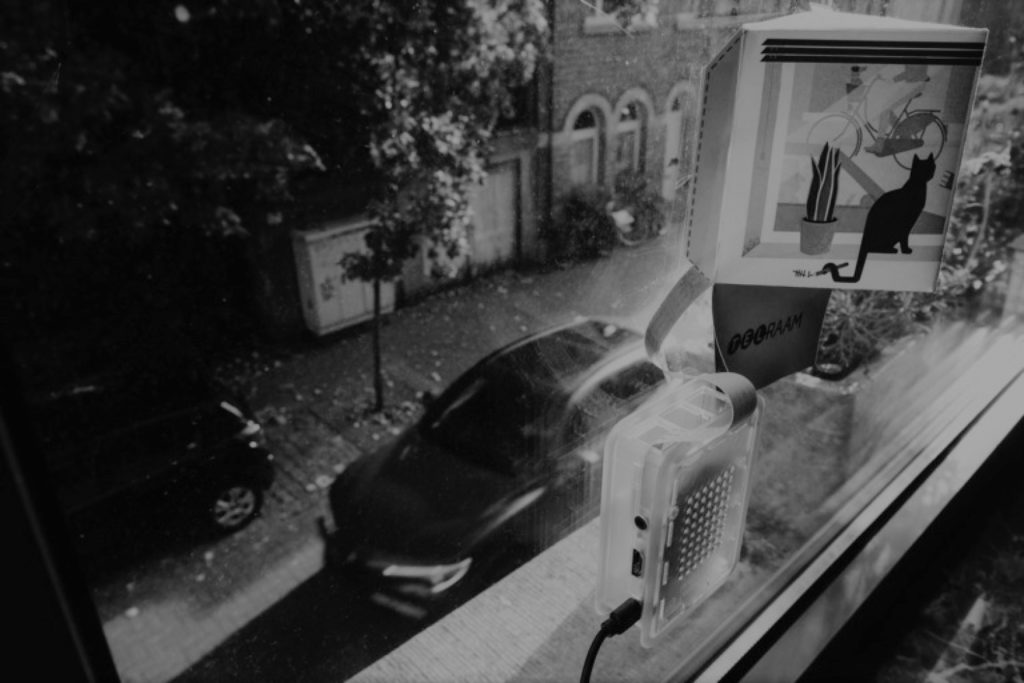
These new initiatives, as well as countless community groups promoting active travel and environmental change are the new force driving positive change in Cardiff. People are finally becoming empowered and having their voice heard.
How can I get involved?
- Cardiff Council provides consultation processes for all their new plans and schemes. Active travel schemes are significantly aided by support from the community in these consultations. There are simply too many of note to name, but all current and previous consultations can be found here.
- The quickest way to follow any new developments in your neighbourhood is to follow local community groups on social media or through their websites. Information on Cardiff Cycle City, which was mentioned in the article, can be found here. Living Streets Roath can be found here.
- Cardiff Commonplace, a community-sourced map of active travel issues can be found here. Anyone can leave a comment about an issue in their area.
- WeCount Cardiff sends free traffic sensors to Cardiff residents to track traffic and air pollution. They can be found here.


